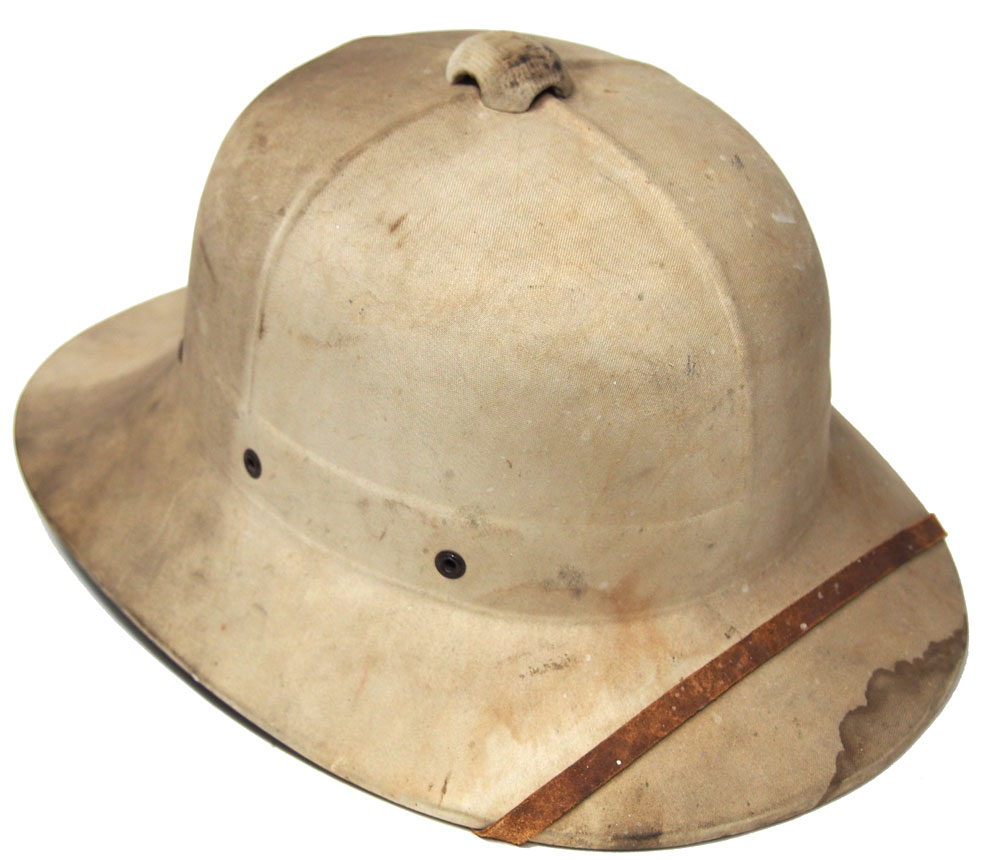 Since launching this website in early 2012 we’ve encountered numerous helmets that haven’t been largely documented, if documented at all. We’ve come across a number of helmets that can only be described as variations of the classic British Wolseley style helmet. These have included helmets made of sola pith, but recently a far more unusual example was offered for sale on eBay. It is a Canadian-made helmet that appears to be based on the naval helmet that was based on the Wolseley.
Since launching this website in early 2012 we’ve encountered numerous helmets that haven’t been largely documented, if documented at all. We’ve come across a number of helmets that can only be described as variations of the classic British Wolseley style helmet. These have included helmets made of sola pith, but recently a far more unusual example was offered for sale on eBay. It is a Canadian-made helmet that appears to be based on the naval helmet that was based on the Wolseley.
While the four panel naval helmets should NOT be considered true Wolseley helmets, these do appear to be a variation that offer a more compact brim, and instead of puggaree have a single band around the outside of the helmet. These were introduced in the late 1930s and used throughout the Second World War and the Cold War in tropical stations.
What makes this new find so interesting is that it is the only one of its kind encountered by the authors and it doesn’t appear to be referenced in any book or other publication. It is made of the same pressed fiber material as other Canadian helmets of the World War II era – and therefore it can only be speculated that it was produced by Hawley Canada, a division of the Hawley Company that produced American M1 helmet liners as well as the American pressed fiber helmets.
The helmet has the same shape as the naval pattern helmet and unlike other pressed fiber helmets lacks the faux puggaree. It does however feature a removable ventilator cap on the top – much like the Hawley Canada helmets that were made under contract for the South African military during the Second World War.
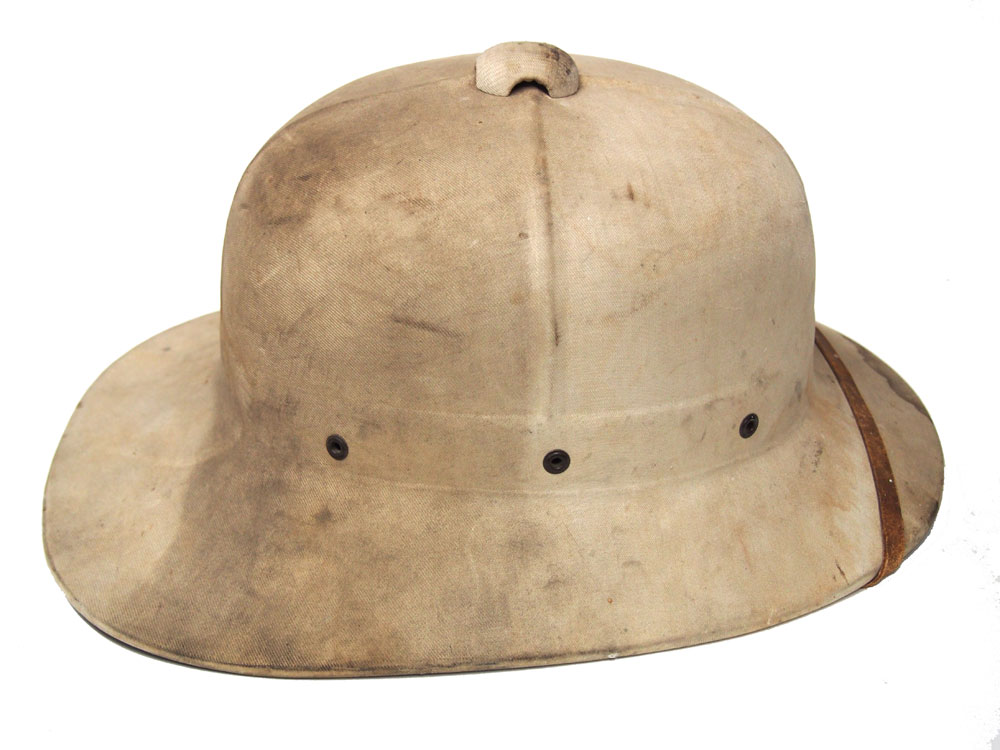
This helmet features a shape similar to the classic Wolseley. It is a pressed fiber helmet that features a leather chinstrap, no faux puggaree but has a removable ventilator – that latter feature is unique among pressed fiber helmets.
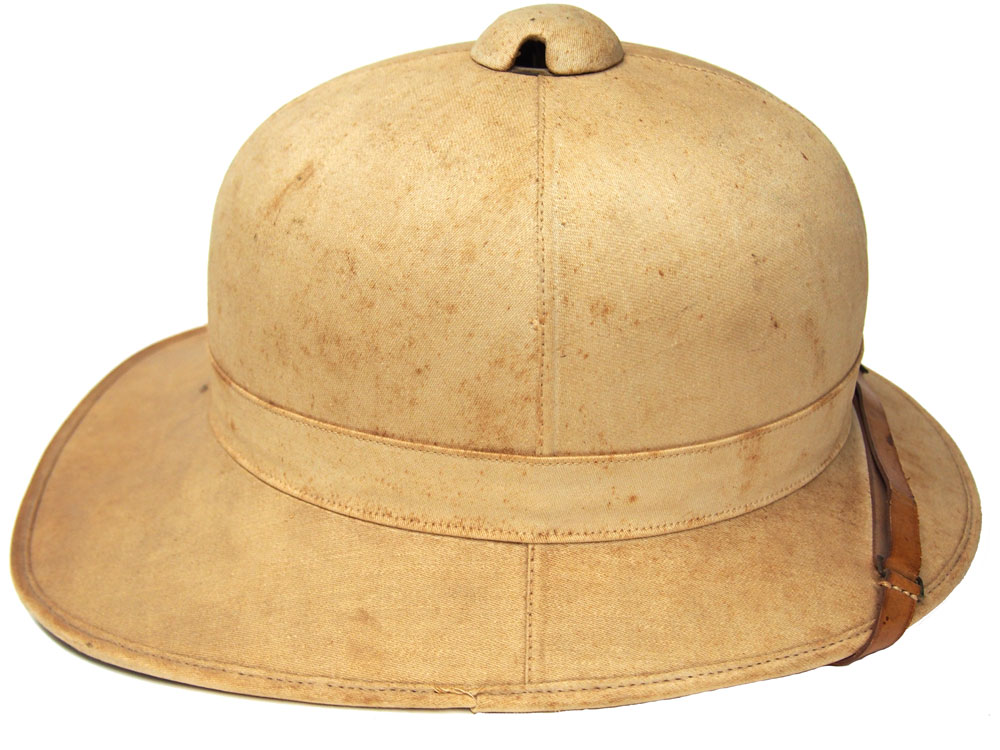
A Canadian World War II dated naval style helmet to show how the pressed fiber helmet above has a similar shape. Note that the pressed fiber helmet mimics the placement of the helmets seams.
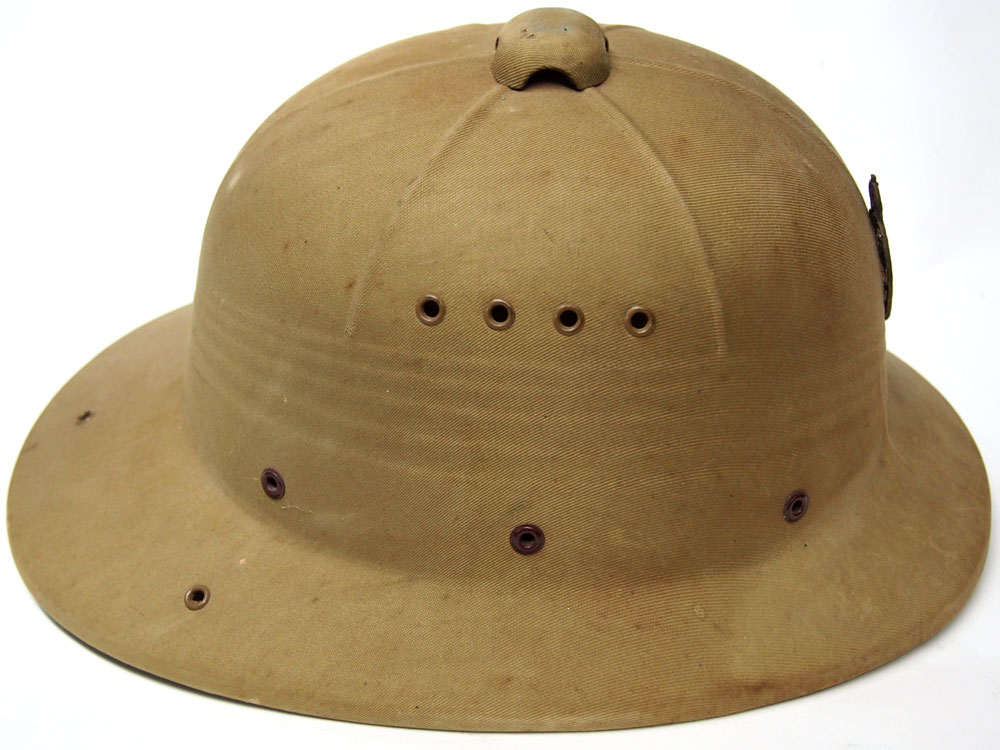
A pressed fiber example of the South African “Polo” helmet – note that the above fiber helmet has similar placement of the grommets for the liner and chinstrap. This South African contract helmet WAS the only known pressed fiber pattern helmet to utilize a true removable ventilator cap.
This helmet also features aluminum foil inside, which was used in British Wolseley pattern helmets beginning in the 1930s. To date this use of foil hasn’t been seen in the other naval pattern helmets, suggesting this helmet’s designers “borrowed” ideas from other helmets.
While it is impossible to conclusively date the helmet, based on the use of the foil and the attached (rather than removable) leather chinstrap we suspect it is from the late 1930s or possibly a wartime helmet. At this point we can speculate that it is an experimental pattern that may have been considered as a cost-saving measure to produce the naval helmets.
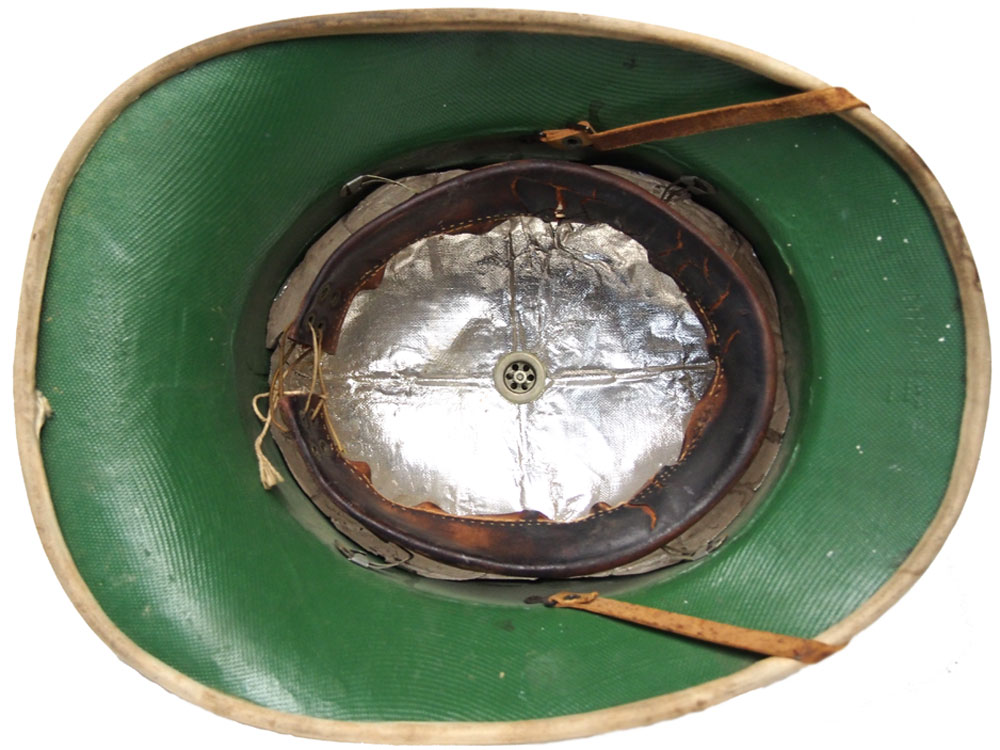
The interior view shows a more robust leather liner that is similar to the contract helmet for South African. The chinstrap is affixed to the helmet and there is foil in the dome as well. The helmet is also painted green on the underside of the brim, and in this regard is similar to the Canadian style naval helmets.
It should be noted that during the war cork was in short supply and the Wolseley helmets were constructed of pressed felt. Felt may not have been ideal for use aboard ship, so perhaps this was developed as an alternative. At this point this is just another helmet that will go in the mystery file!
